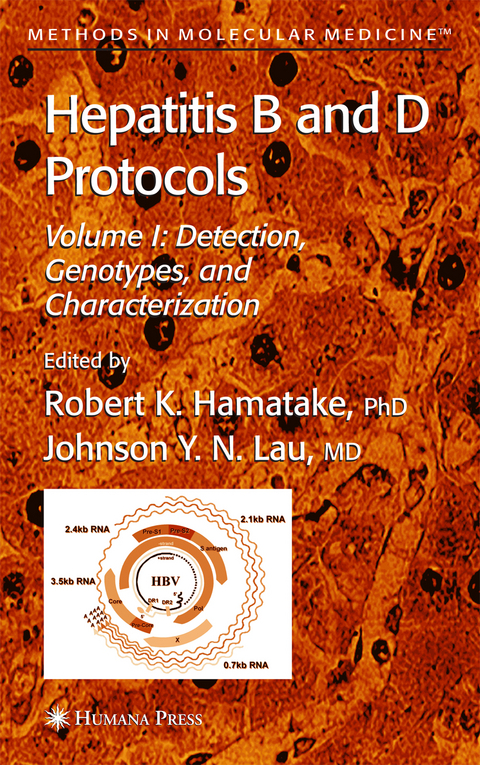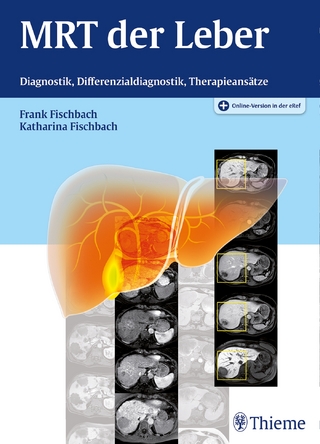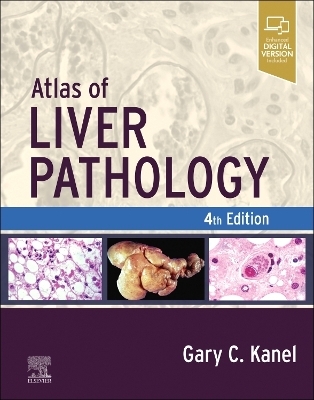
Hepatitis B and D Protocols
Humana Press Inc. (Verlag)
978-1-58829-105-9 (ISBN)
Despite the availability of an effective vaccine, there are still 400 million people, worldwide who are chronically infected with hepatitis B virus (HBV). For them, the vaccine, as currently applied, has no value. Given the possible consequences of HBV infection, the number of those chronically infected with HBV presents an enormous public health challenge. For example, the major etiology of hepatocellular carcinoma (HCC) is chronic infection with HBV. Although fifth in cancer incidence, worldwide, HCC/liver cancer is the third leading cause of cancer death. The high mortality as- ciated with HCC arises because the disease is often detected late and is unresponsive to treatment. The number of deaths caused by PHCC is expected to rise over the next 20 years. Those chronically infected with HBV have a life risk of death to HCC of between 10 and 25%. Even the limited efficacy of drugs for the treatment of chronic HBV helps underscore the point that this disease is responsive to therapy. Drugs that target the polymerase (e. g. , hepsera and lamivudine) and interferon alpha represent two distinct strategies and show that both conventional antiviral and immunothe- peutic approaches can be used in management. However, the current inventory of therapeutics is inadequate. Interferon alpha is of limited value, only parenterally ava- able, and fraught with adverse reactions.
Detection of Viral Markers.- Overview of Commercial HBV Assay Systems.- Detection of HBV DNA in Serum Using a PCR-Based Assay.- Detection of HBV DNA by Oligonucleotide Probing.- Detection of HBV RNA in Serum of Patients.- Quantification of HBV Covalently Closed Circular DNA from Liver Tissue by Real-Time PCR.- In Situ Hybridization for the Detection and Localization of HBV DNA in Liver Sections.- Quantitative Assay of Hepatitis B Surface Antigen in Serum or Plasma Using Laurell Electrophoresis.- In Situ Detection of Hepatitis B Viral Antigens.- Detection of Hepatitis B Virus X Antigen by Immunohistochemistry and Western Blotting.- Detection of Serum HDV RNA by RT-PCR.- Nonradioisotopic In Situ Hybridization for HDV RNA.- Detection and Characterization of Small and Large HDV Antigens.- Immunohistochemical Detection of Hepatitis Delta Antigen.- Viral Genotypes and Variants.- HBV Vaccine-Escape Variants.- HBV Genotyping and Analysis for Unique Mutations.- A One-Filter–Three-Probe Assay for Defective Interference (DI) Effects of Naturally Occurring Core Internal Deletion (CID) Variants of Human Hepatitis B Virus.- Detection of Hypermodified Middle-Envelope (M) Proteins Secreted from Naturally Occurring HBV Variants Containing a preS2 Internal Deletion.- Hepatitis B Viral Genotyping with the Research INNO-LiPA HBV Genotyping Line Probe Assay.- Molecular Biological Characterization.- Processing of Hepatitis B Virus Surface Proteins.- Binding of Duck Carboxypeptidase D to Duck Hepatitis B Virus.- Nucleoprotein Transport of HBV Capsid Particles.- Phosphorylation Analysis of Hepatitis B Virus Core Protein in Mammalian Cells.- Study of HBV Replicaton Capcity in Relation to Sequence Variation in the Precore and Core Promoter Regions.- A cis/trans Genetic Test for PleiotropicPhenotypes Associated with a Frequent Naturally Occurring Mutation at Amino Acid 97 of HBV Core Protein.- Studying DHBV Polymerase by In Vitro Transcription and Translation.- Expression and Purification of Functional Hepatitis B Virus Polymerase in the Baculovirus Insect Cell System.- Localization of Duck Hepatitis B Virus Polymerase Within Cells.- Endogenous Polymerase Assay for the Analysis of Hepatitis B Virus in Transgenic Mice.- Transcriptional Control of Hepatitis B Virus.- In Vitro Reconstitution of ?-Dependent Duck Hepatitis B Virus Replication Initiation.- Hepatitis B Viruses.
| Erscheint lt. Verlag | 28.1.2004 |
|---|---|
| Reihe/Serie | Methods in Molecular Medicine ; 95 |
| Zusatzinfo | 1 Illustrations, color; 109 Illustrations, black and white; 376 p. 110 illus., 1 illus. in color. |
| Verlagsort | Totowa, NJ |
| Sprache | englisch |
| Maße | 152 x 229 mm |
| Themenwelt | Medizinische Fachgebiete ► Innere Medizin ► Hepatologie |
| Studium ► Querschnittsbereiche ► Infektiologie / Immunologie | |
| ISBN-10 | 1-58829-105-7 / 1588291057 |
| ISBN-13 | 978-1-58829-105-9 / 9781588291059 |
| Zustand | Neuware |
| Haben Sie eine Frage zum Produkt? |
aus dem Bereich


